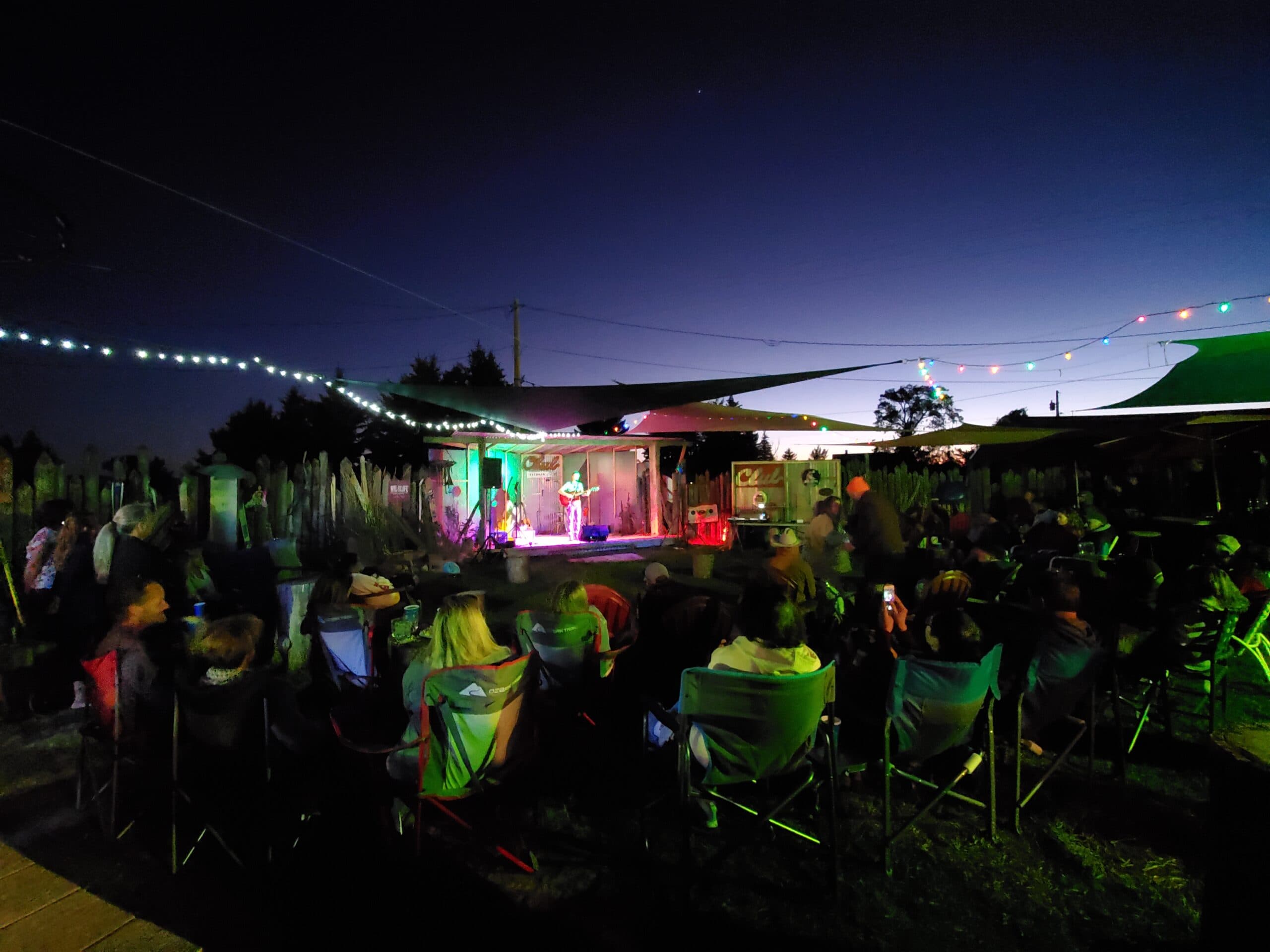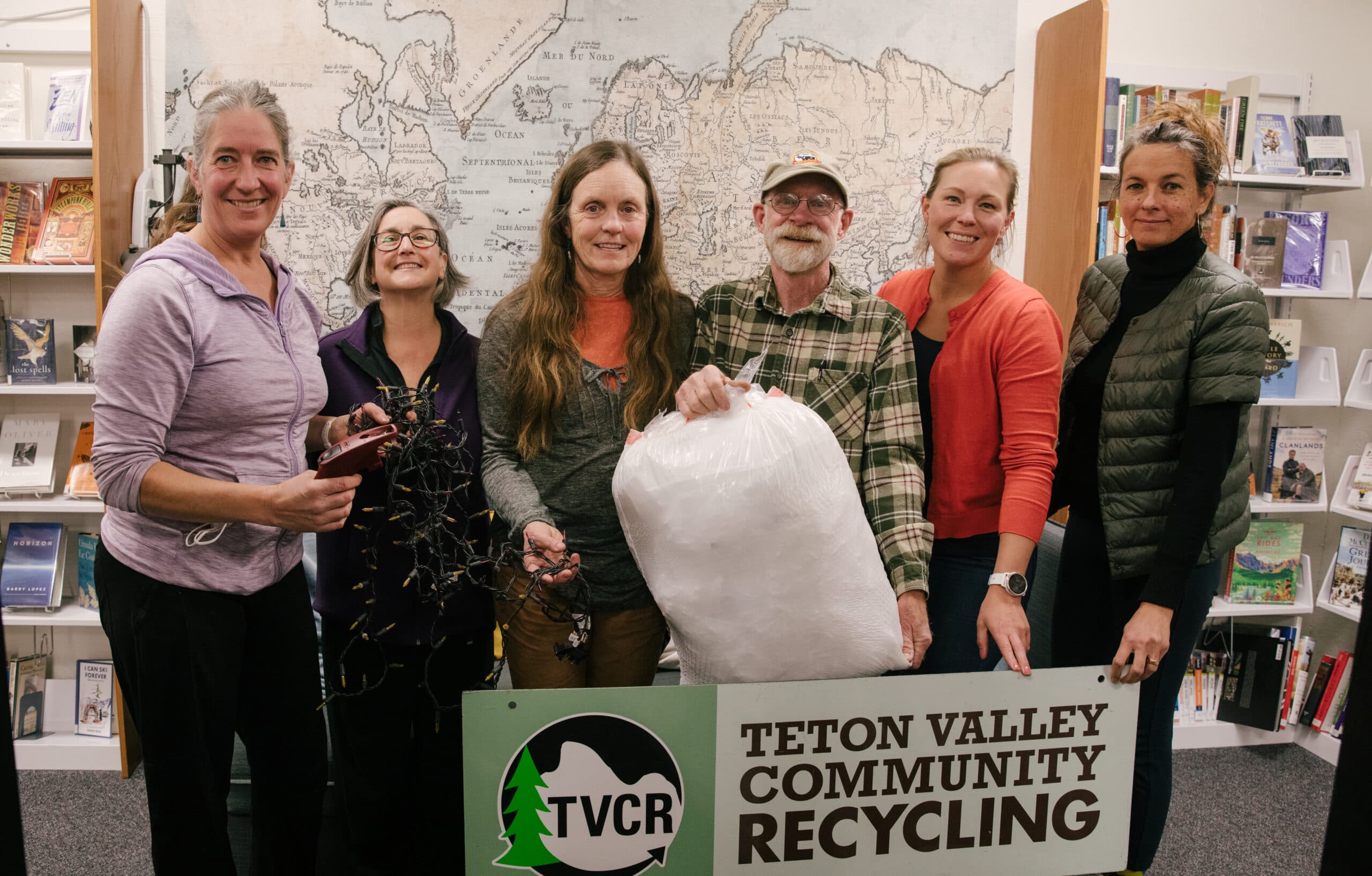A Hoop and a Heart
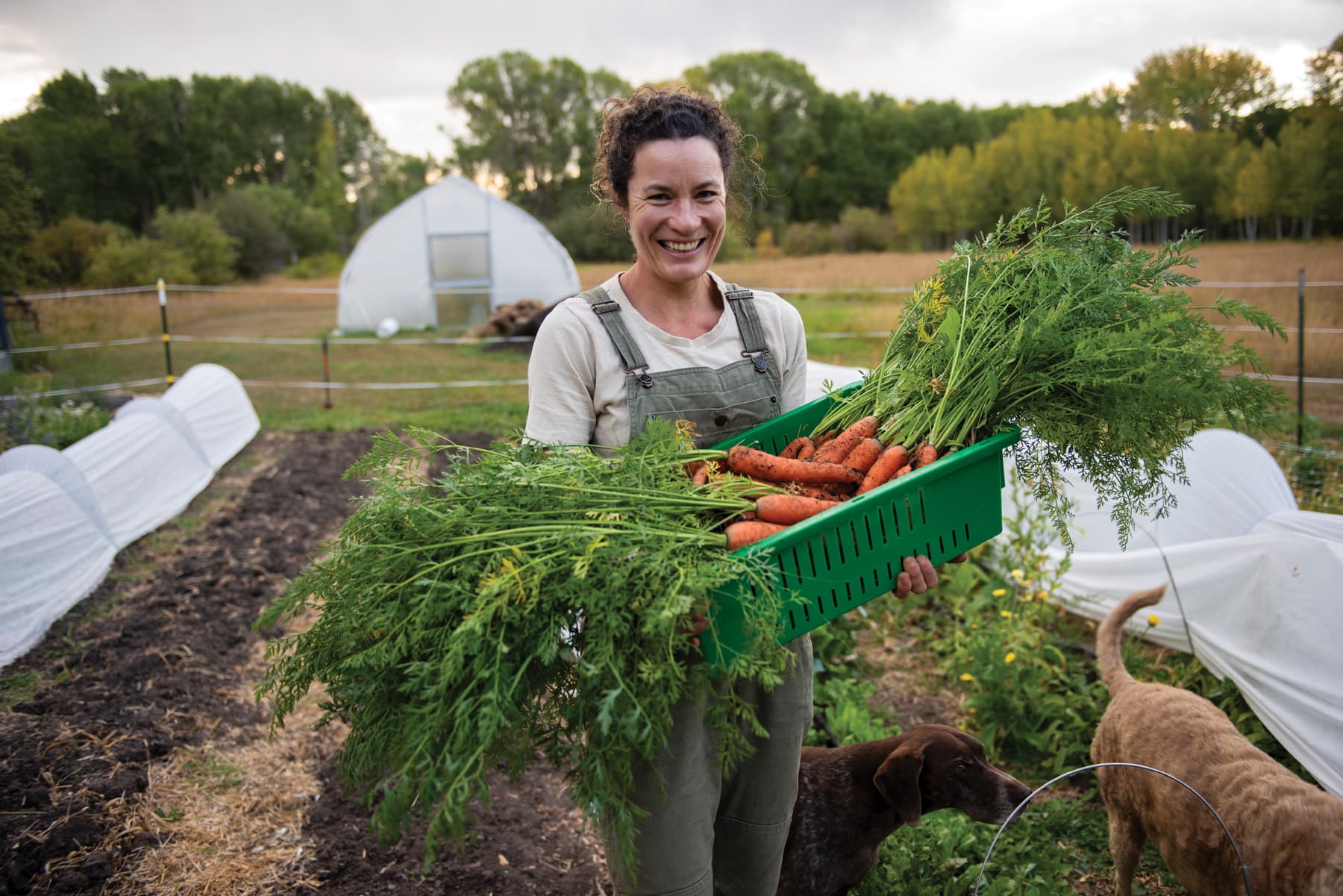
Hidden beneath cottonwood trees lies Owl Meadow Farm, a one-woman growing operation that sits in a sink, or low point, on South Leigh Creek—one of the valley’s coldest spots.
But the fact that Sarah Parker, a registered nurse at Teton Valley Hospital, is growing produce in such a challenging microclimate doesn’t seem to faze her. She’s following a passion she’s had since childhood, growing up among the farms of West Virginia and, later, studying agroecology in college. Now she is pursuing her mission of providing food equality for residents of Teton Valley.
After Sarah and her husband Josh bought their dream property, they soon realized the spot they were planning on farming flooded every spring and had a growing season three to four weeks shorter than that enjoyed by farms up the road in Victor. So, Sarah began taking notes before starting her small garden, which consisted of a few raised beds that often fell prey to a killing frost each August. Soon after, she purchased and erected a substantial hoop house—a game-changer—and started donating her harvest’s surplus to Food for Good, a food rescue program run by the Community Resource Center of Teton Valley.
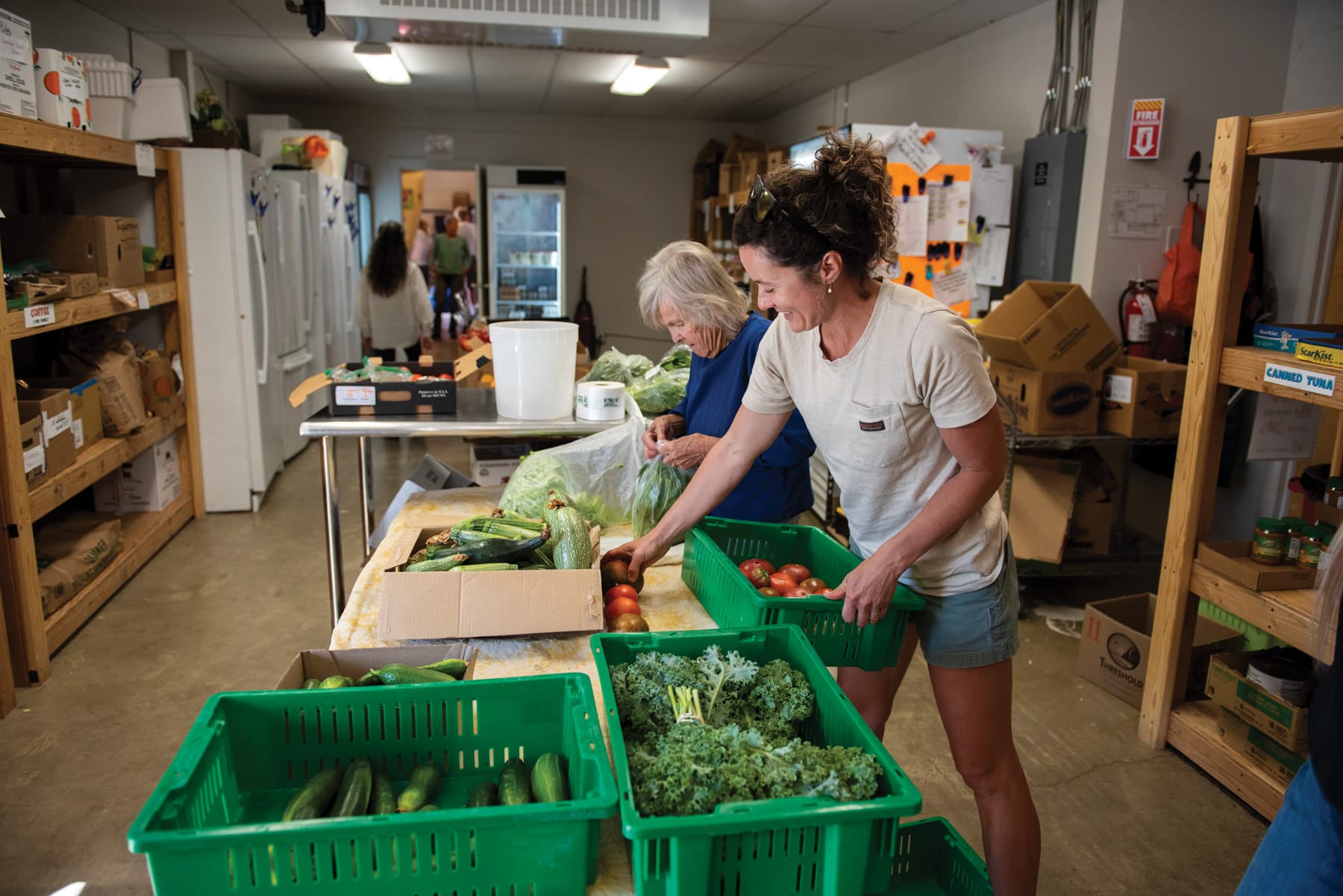
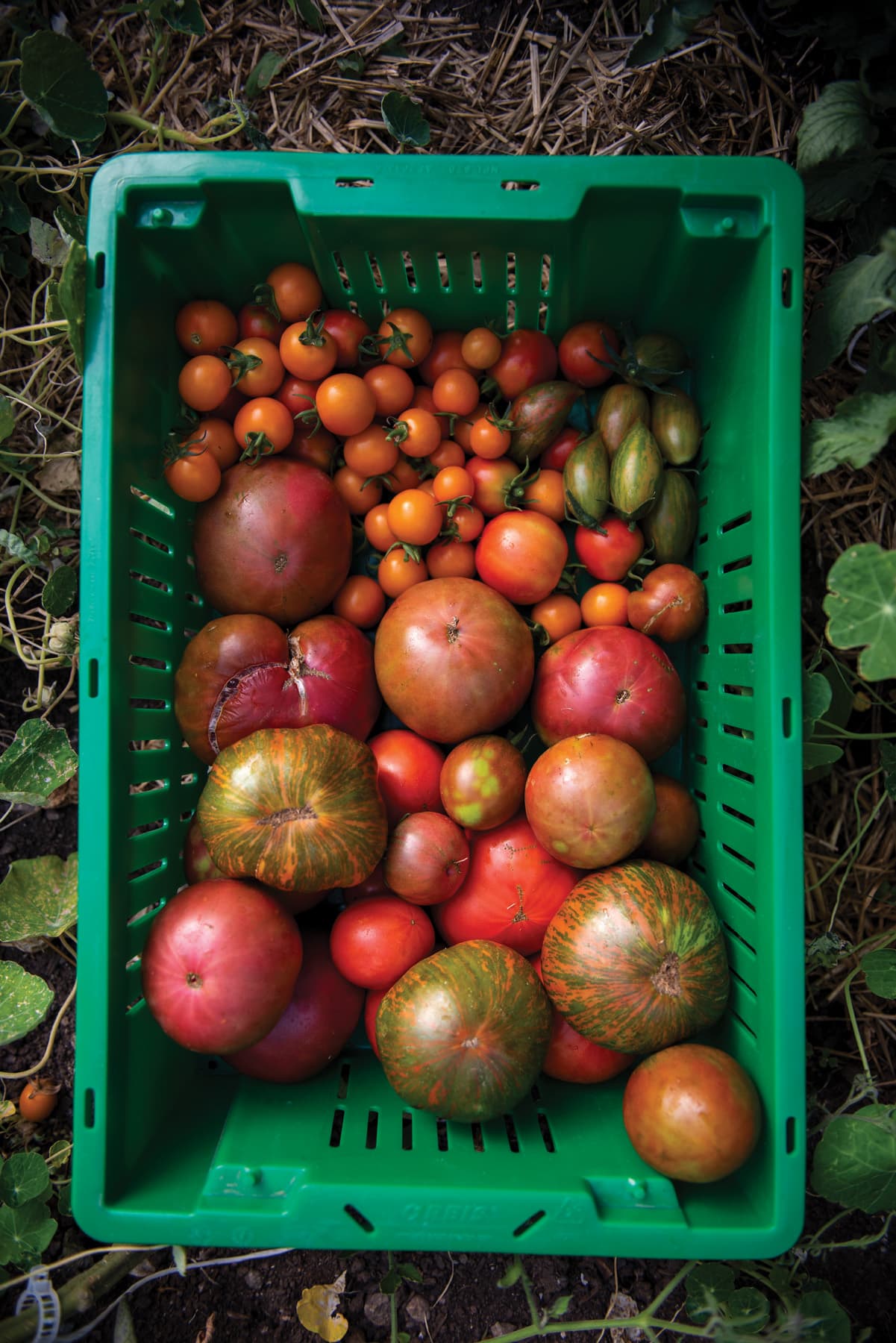
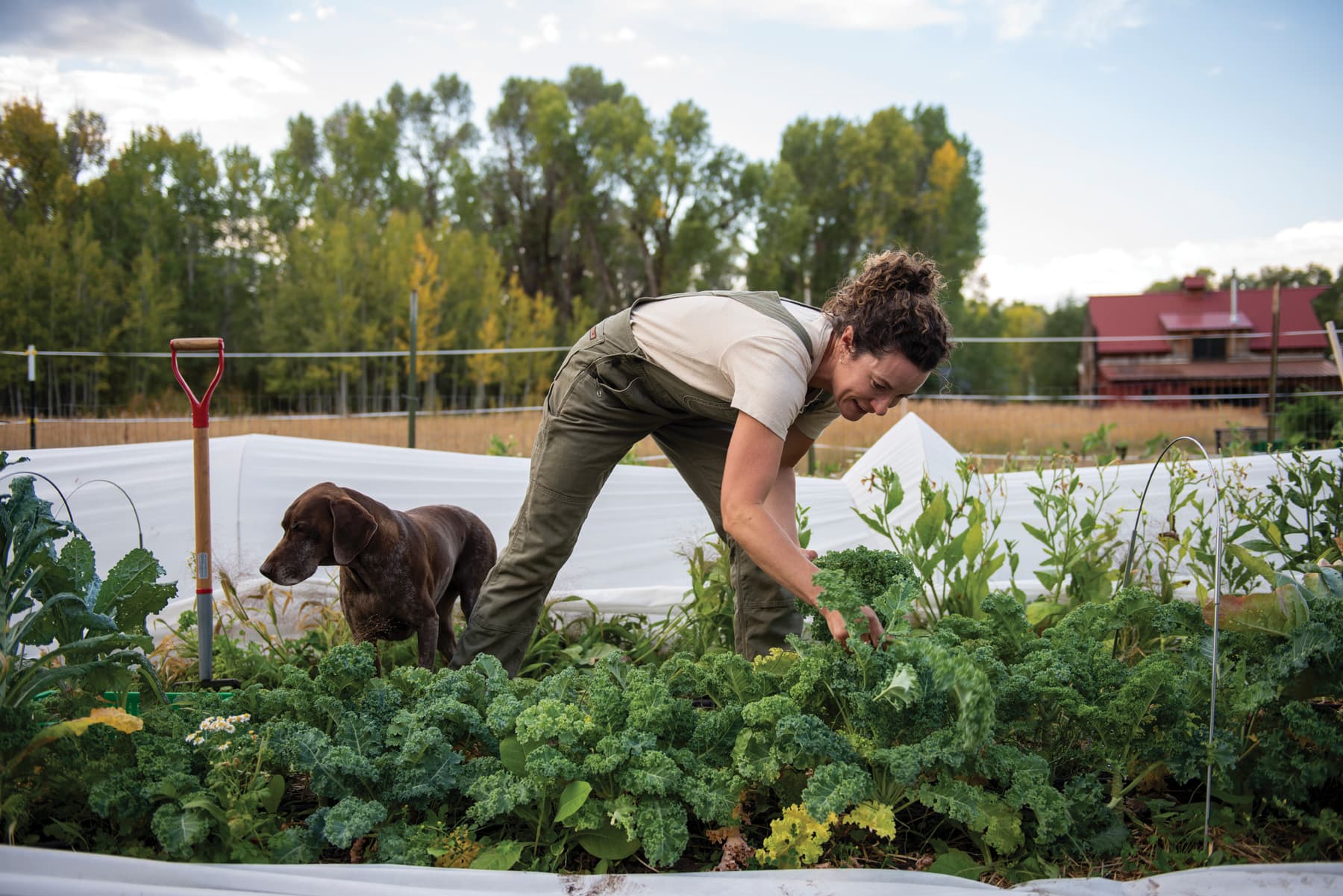
Mission Accomplished
Sarah’s personal assignment of making farm-fresh food accessible to all was inspired by Sky High Farm in New York State, an organization she stumbled upon while conducting research online. This nonprofit “committed to addressing food security and nutrition by improving access to fresh, nutritious food” became her aspiration.
“Food is already political; the socio-economics of it are so crazy,” Sarah explains. “Like, if I’m selling something for premium, and then I’m giving that same product to someone else for free, I’m inherently building on that disparity even more … Sky High Farm’s model [in contrast] is to grow amazing quality food, feed thousands of people in New York City, and then raise the money to pay for it.”
Sarah started out small, donating her meager surplus to the community through nontraditional avenues. Andrea Swedberg, program manager for Food for Good, remembers the first day Sarah came into her office.
“It was 2023, and Sarah approached us with a cooler full of kale, greens, and Swiss chard,” recounts Andrea. “The size and magnitude of her Swiss chard and kale was impressive. It, seriously, was the most beautiful produce I’d ever seen!”
Last year, Sarah’s harvest expanded to the point where she reached her goal of providing large varied boxes of produce every week to food pantries. Her donations are as fresh and local as Community Supported Agriculture (CSA) shares, but with no price tag. She says 2025 is going to be even better.
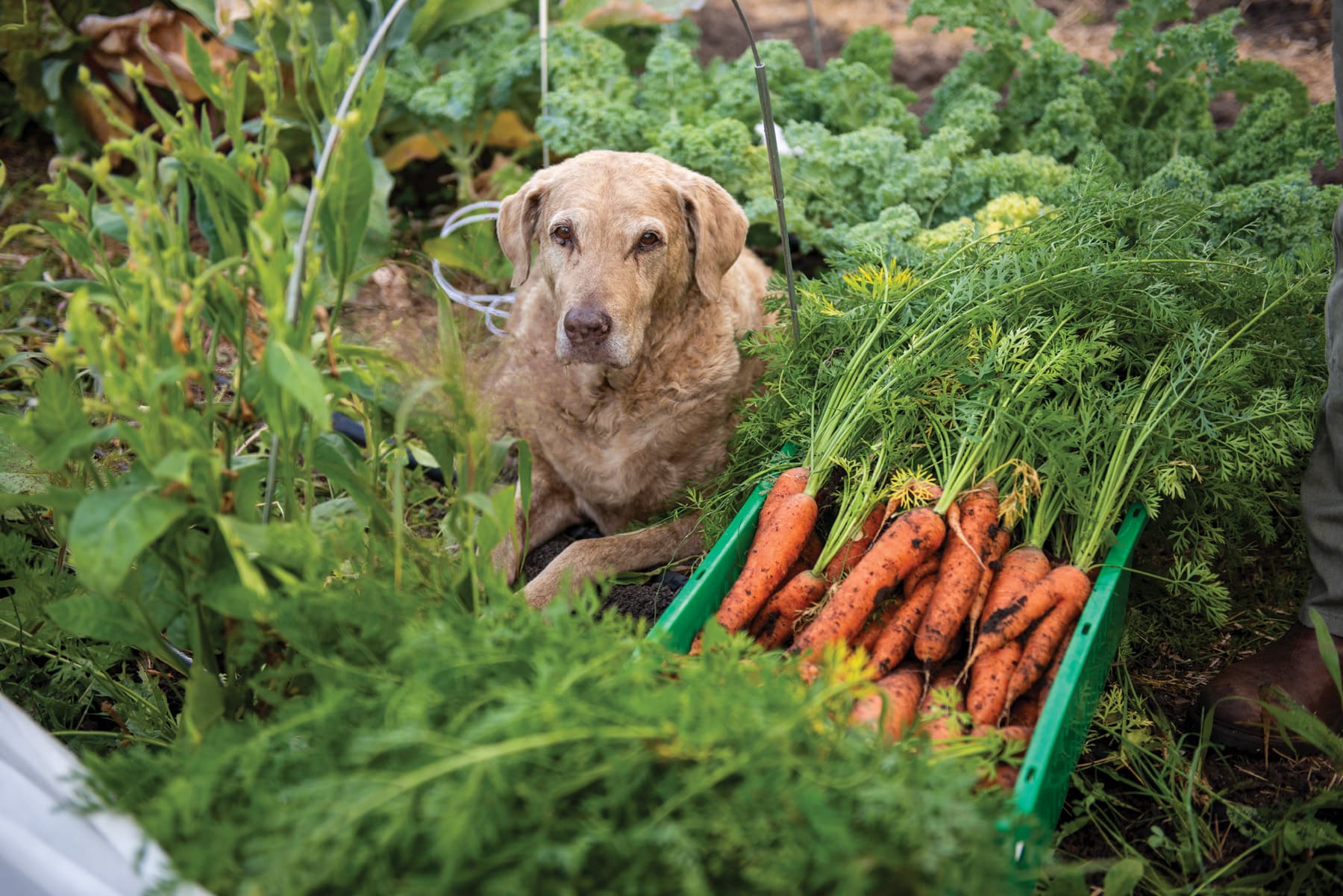
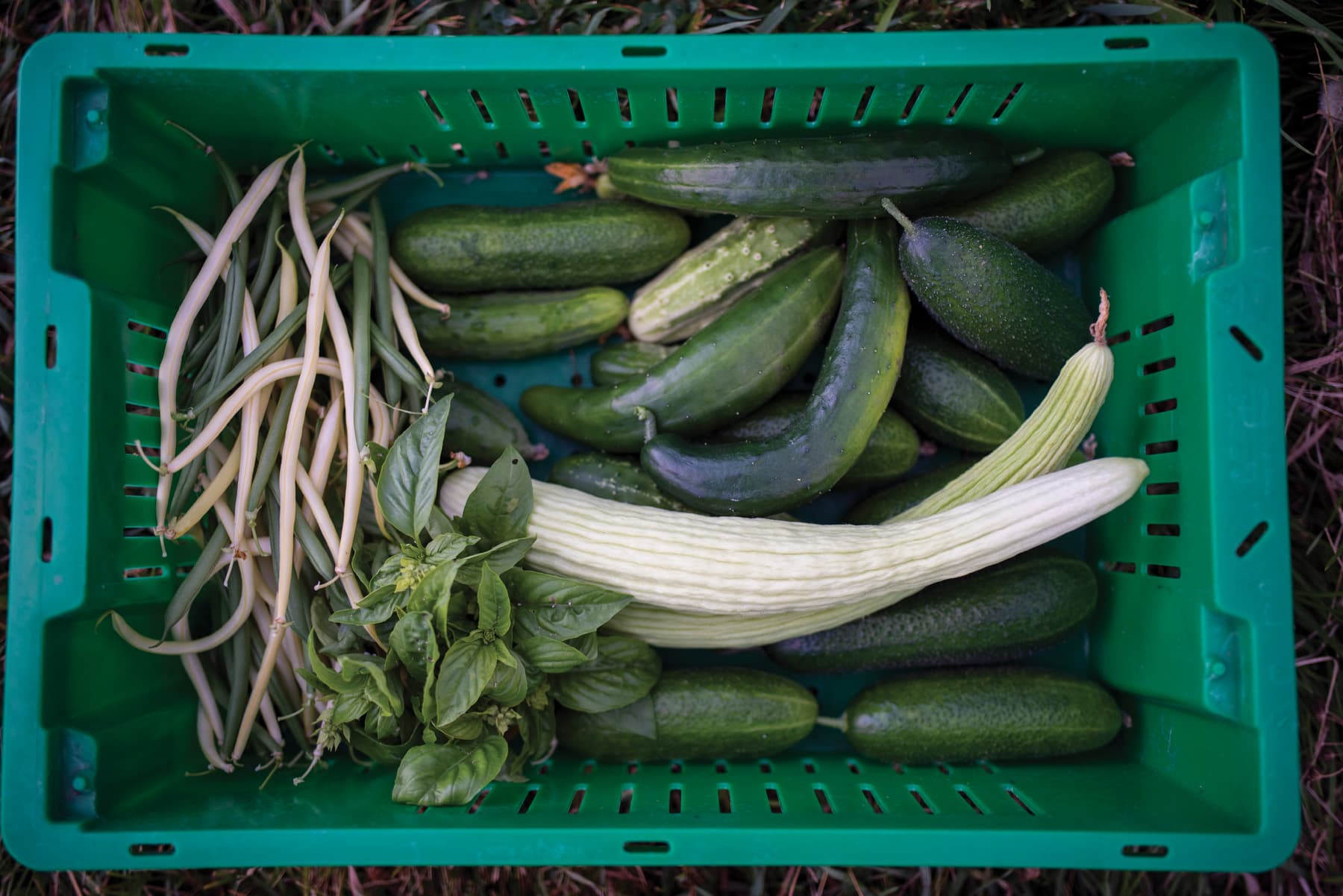
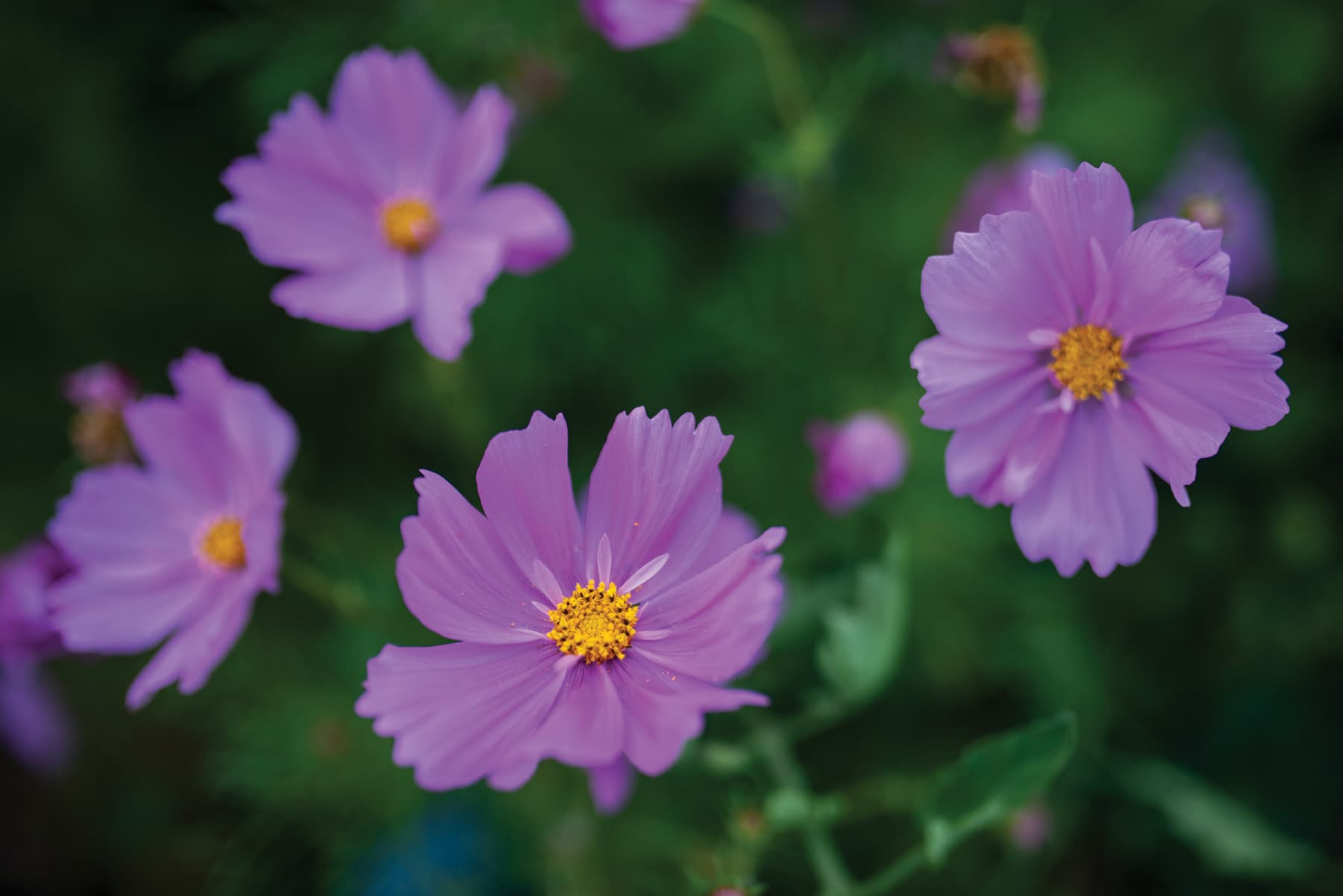
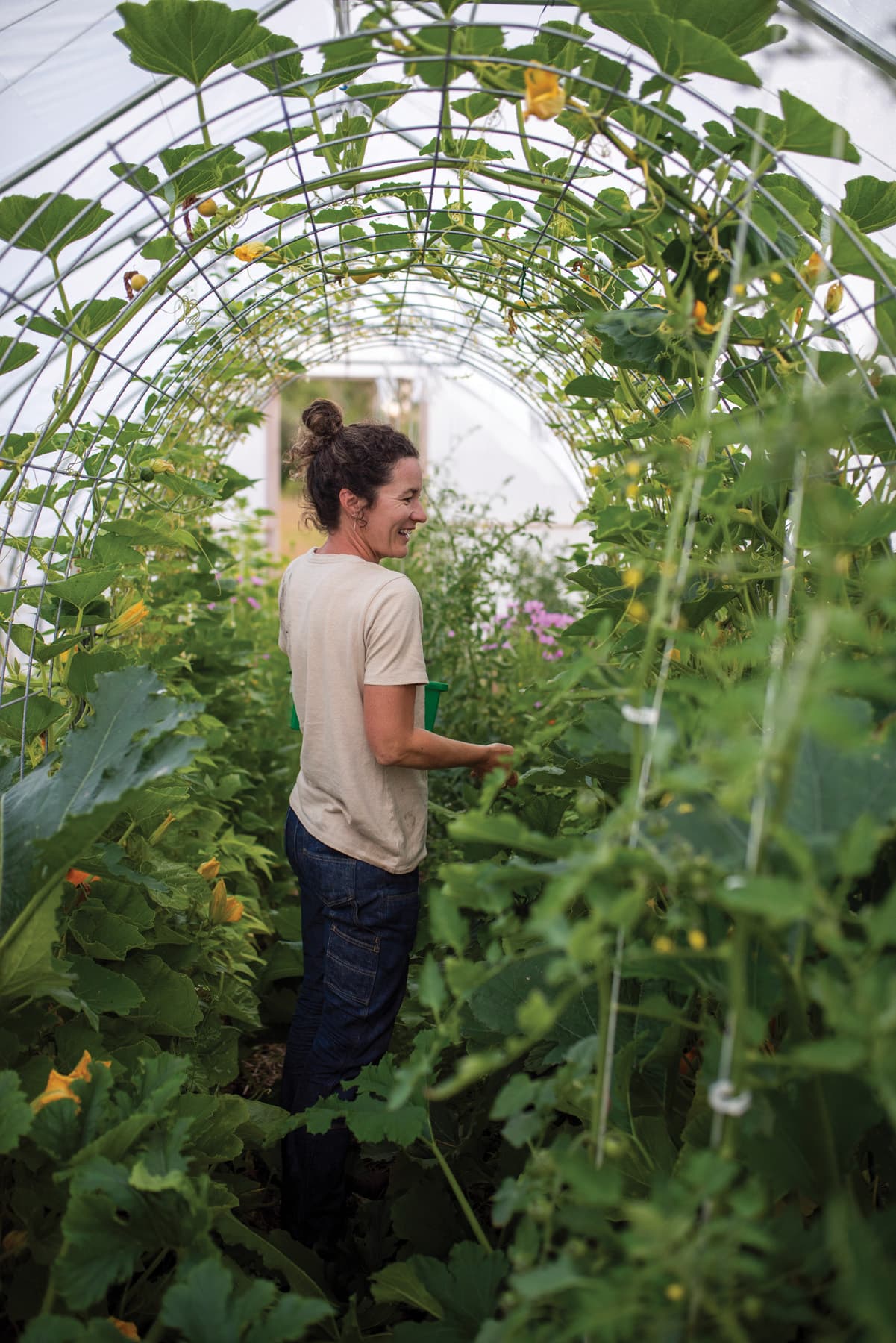

Let the People Eat
All told, Owl Meadow Farm occupies only about a half-acre of ground, but provides well over forty to fifty—and sometimes even over a hundred—pounds of food to community organizations each week. Sarah picks the produce herself, with occasional help from friends. She estimates that she spends about ten hours a week in her garden during the growing season, with the exception of what she calls “manual labor May.”
Owl Meadow Farm’s seasonal offerings include spinach, arugula, chard, kale, tomatoes, peppers, cucumbers, winter squash, carrots, beets, flowers, raspberries, shelling peas, and beans, all grown free of fertilizers and pesticides. Sarah plans to till more space this year for potatoes and other roots and bulbs, like onions, garlic, and shallots.
“People want stuff that is easy to snack on, like tomatoes, carrots, cucumbers, and radishes,” she explains. “I think it’s important to grow culturally relevant food for people. I don’t think you can expect people to fall in love with Lacinato kale if it’s something they’ve never seen.” She grew epazote and Mexican grey zucchini this year and is planning to try more hot peppers and tomatillos next season.
Sarah has yet to do any fundraising, although Owl Meadow Farm achieved nonprofit status in 2024. Right now, her operation is fully self-funded. Still, she foresees subsidizing her efforts by offering a farm dinner on her property as a way to introduce local residents to her operation and gain donors. She’d also like to apply for grants through the National Resources Conservation Service and the U.S. Department of Agriculture.
“Anybody that’s getting her produce, especially for free, is getting the best of the best,” says Andrea. “It’s just amazing to me that someone who came on the scene so quickly offers both the quality and quantity Sarah provides.”
Because Food for Good is a food rescue program that mainly sources excess and outdated food from grocery stores, bakeries, and restaurants, Andrea feels it’s important to throw farm-fresh finds into the mix.
“Getting anything fresh is monumental,” she says. “Fresh produce is the base of any meal and it’s what, ultimately, is going to offer the most nutrients.”
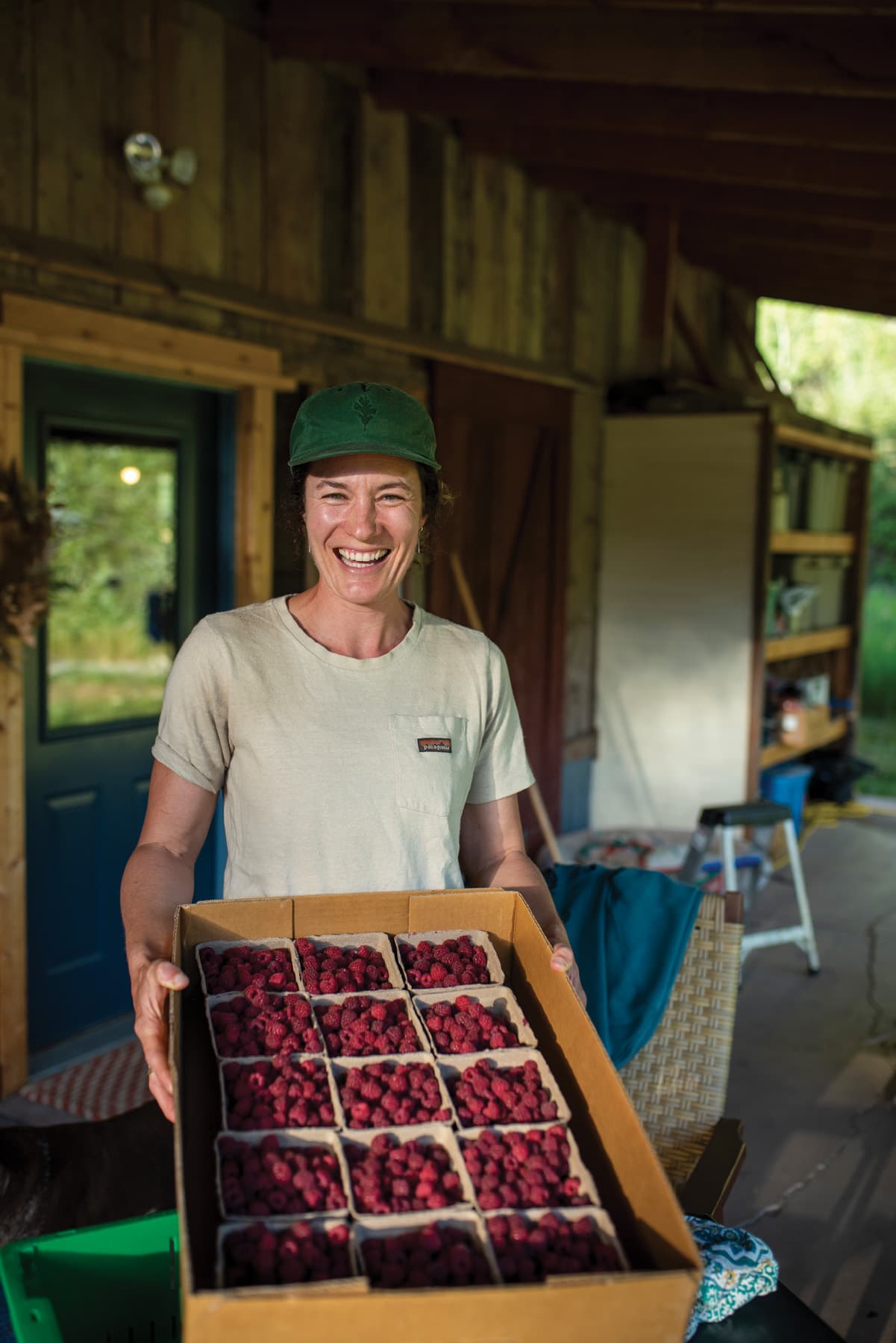
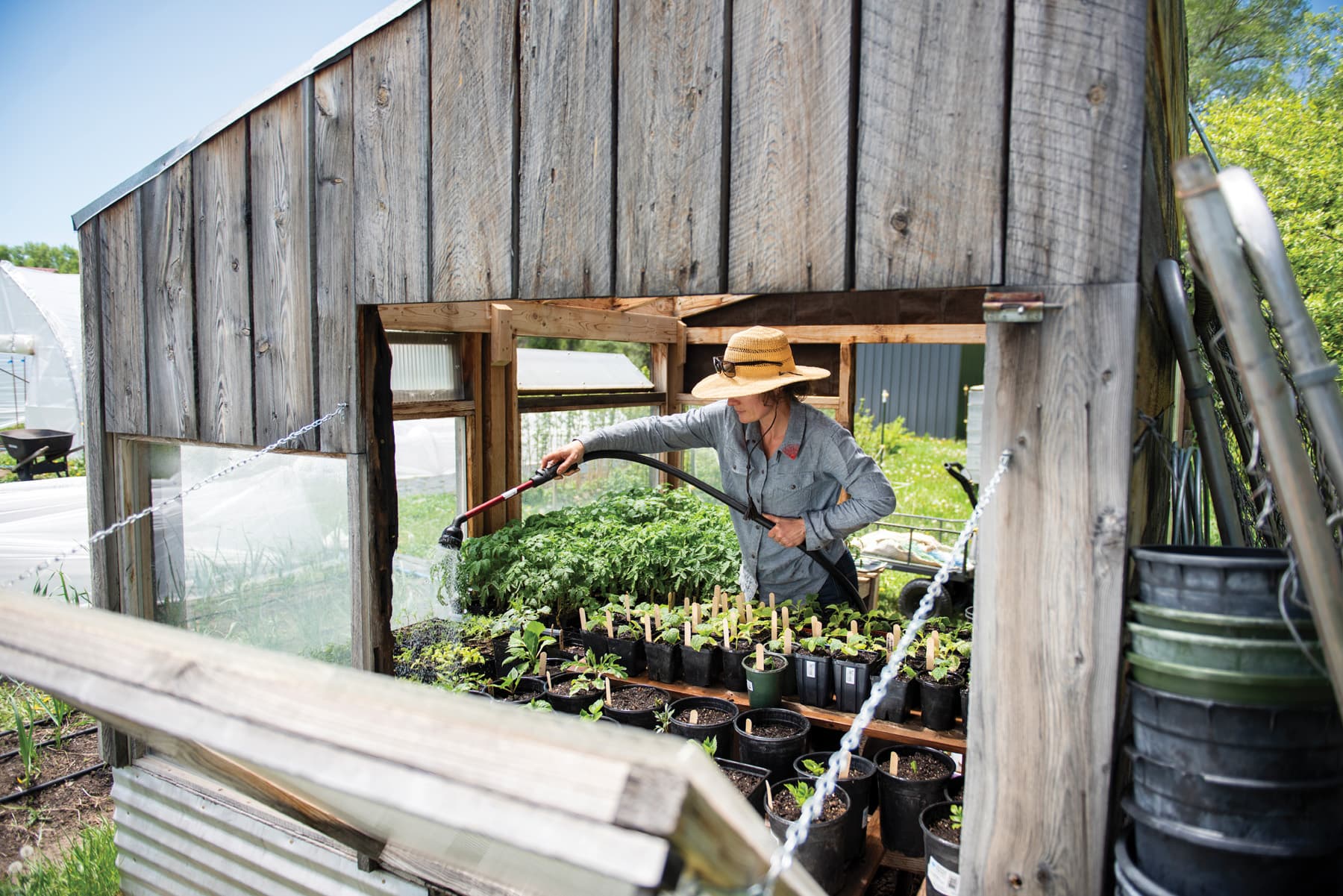
The “Good Food” Movement
Sarah says that today’s “wellness culture marketing” labels food as either “good” or “bad.” She notes that we live in an economy of convenience where good food is expensive and non-nutritionally dense food is cheaper. Still, she believes in the concept of food justice for everyone.
“I see [my efforts] eliminating the disparity that ‘good food’ is only for rich people and ‘bad food’ is for everyone else … We [in the U.S.] don’t do a good job of making it easy for people to eat well,” she says.
“Plus, there’s something powerful about eating food from your community,” Sarah asserts. “And while farmers markets bring the community together, they can also be othering to folks who feel the prices are out of reach … Our nonprofits here have done a good job of making sure people have quality food, while also maintaining a really nice sense of community dignity without making it feel like charity.”
This one-woman farm in a chilly little nook of Idaho is definitely moving the food justice needle, and Sarah embraces her community with produce offerings as big as her heart is wide. Andrea believes that Sarah’s donations “keep people going … and it sparks creativity and makes people resourceful.”
What Sarah Parker is providing is more than just food equality. Her impressive efforts encourage an inclusivity that, similar to nature, doesn’t discriminate between the haves and the have nots. Instead, she invites others in to connect to the circle of life, from the first greens of spring to the hardy roots of fall.


